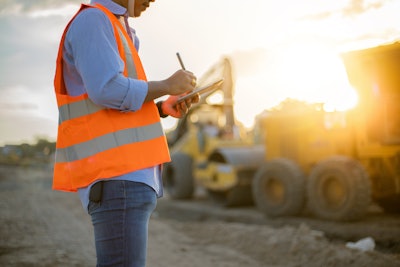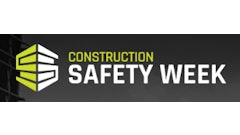
As a native Floridian, I’ve seen first-hand how a perfect storm can trigger a housing crisis, slow other commercial and office development–and spark a revolution in the construction business.
The Sunshine State is the nation’s third-largest state, and in 2022 it also was the fastest-growing state for the first time since 1957. The U.S. Census Bureau reports Florida grew by 1.9 percent last year, to more than 22.4 million residents. That explosive growth only increases the demand for more housing and services in a market that already had a tight housing market.
Soaring home prices, the nation’s most expensive property insurance market, high interest rates and increases in construction costs are all contributing to a housing affordability crisis in a state that cannot keep up with the demand for quality housing that working families can afford. Florida Realtors report the median price for a single-family home in July was $415,000 and sales were down 6.4 percent over a year ago. The national median price was $412,300, so the days of Florida being the land of sand, sun and cheap housing are long gone.
On top of all those market forces is the destruction from hurricanes and the trend of intensifying storms – devastating entire communities in Southwest Florida and elsewhere, families losing everything and trying to pick up the pieces as they struggle to find housing while awaiting insurance settlements and home repairs. Last year, Hurricane Ian cost insurers roughly $63 billion, the largest storm-related losses in state history, and the problem is only expected to get worse. Over the next 30 years, hurricanes will endanger an additional 13.4 million properties nationwide, according to First Street Foundation, a climate change nonprofit. In Florida alone, the foundation reports, the number of properties that could be impacted by a Category 5 hurricane is predicted to increase from 2.5 million to 4.1 million over the next three decades.
The Perfect Storm for American Innovation
Clearly, the time for a construction revolution is upon us. If America is going to remain a world leader in competitiveness and innovation, we need to embrace new technology and improve productivity. We have to create smarter, stronger and more sustainable ways to build to attract quality workers, meet demand and withstand more powerful storms. The solutions must come from within the industry, and it will require us to embrace bold change.
Unfortunately, the construction industry has been stuck in neutral for too long. As a 2023 McKinsey study noted: “Construction sites in 2023 might in many ways resemble those in 1923, with manual bricklaying, paper blueprints, and scaffold towers. At $12 trillion, architecture, engineering and construction (AEC) is one of the biggest industries in the world, but historically it has been among the slowest to digitize and innovate.’’
The McKinsey report acknowledged that is changing – and change cannot come fast enough. Strong demand for infrastructure, a shortage of skilled labor, and increased stakeholder pressure for data transparency and integration are all accelerating digital adoption. As a result, the AEC tech ecosystem has experienced an explosion of investment and a wave of start-up launches. The report noted an estimated $50 billion was invested in AEC tech between 2020 and 2022, 85 percent higher than the previous three years.
Trend 1: Artificial Intelligence is Changing Construction Processes
I grew up around my family construction business in South Florida before serving two terms in Congress, where I spent a lot of time thinking about the challenges of our nation and how technology is changing nearly every industry. It is clear that one of the solutions for the construction industry is using artificial intelligence to eliminate mundane jobs and speed up the rate of construction. This is more important than ever as supply chain issues and labor shortages are contributing to the rising housing costs in Florida and elsewhere.
Artificial intelligence holds enormous potential to help the industry meet those challenges, saving both time and money. For example, it can automate the normally tedious estimating and planning process in construction. No more poring over numbers and pondering adjustments in construction plans for hours or days. Artificial intelligence can eliminate manually measuring and labeling plans and perform those tasks in seconds. Workers can use artificial intelligence to literally talk to their plans and find answers to their questions immediately.
Not only is AI revolutionizing the estimating process in construction, but it is reshaping almost every process to speed up preconstruction. For instance, AI is accelerating building code approvals by instantly identifying and highlighting non-compliant issues. Artificial Intelligence could even be used to create an automated carbon calculator, which would enable users to determine the carbon imprint for proposed buildings with a click of a button. Imagine how useful that would be for both the industry and its customers in a world where sustainability and durability have never been more important.
Trend 2: Climate Change is Sparking Sustainable Innovations
The building and construction sector’s greenhouse gas (GHG) emissions account for about 40 percent of global GHG emissions. The major contributors to these emissions are the materials the industry uses as well as the heating, cooling and lighting of buildings and infrastructure. So while we can use artificial intelligence to more efficiently measure our carbon imprint, we also must develop more sustainable building products that can lead to faster, more efficient and more sustainable building.
For example, new building systems made of modern materials and composites rather than concrete or wood could be used to build entire structures. That would be a big step toward reducing the carbon footprint of construction. A Deloitte report found that using recyclable materials and building resilience against the consequences of stronger storms fueled by climate change are key steps to reducing that footprint.
In Florida and in other coastal states, developing new products that can withstand stronger hurricanes is particularly important to the overall economy and the affordability of desperately needed new housing. Homeowners’ insurance in Florida is the most expensive in the country. The average cost is now $6,000 a year, a 42 percent increase over 2022, according to the Insurance Information Institute.
Those kinds of annual increases are unsustainable, and private insurers continue to flee the Florida market even as the state-run insurer of last resort, Citizens Property Insurance, continues to shed policies and force homeowners to obtain more expensive private coverage. The construction industry can be part of the solution. New technologies such as artificial intelligence and new building systems can help create homes and other buildings that can withstand stronger storms, which would lower potential hurricane losses and reduce property insurance premiums.
Trend 3: Construction’s Workforce is Evolving with Innovation
By embracing innovation and technology, the construction industry can also reshape its workforce and attract the workers it needs. The Bureau of Labor Statistics' job openings report for June 2023 found that the construction industry had roughly 374,000 job openings while manufacturing had 582,000. While the number of job openings in the two sectors shrank by about 279,000 combined openings compared to a year ago, the total remained near 1 million job openings for those two sectors out of the roughly 8.5 million open jobs economy-wide.
The construction revolution is here. Artificial intelligence and new, sustainable building materials can revitalize our own industry by reducing mundane tasks, creating new efficiencies, and attracting new workers intrigued by innovation and new possibilities. By continuing to innovate, we also can help meet broader challenges such as housing affordability, rising property insurance costs and sustainability in Florida and across the nation.


















